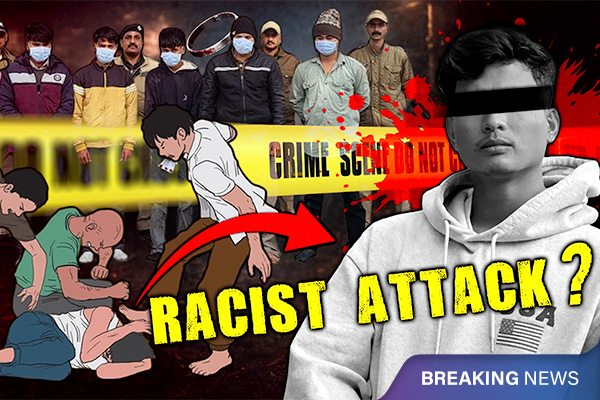Odisha Triple Train Crash: How it Happened?
Watch our latest video and learn about Odisha’s triple train crash and how it happened.
You would have seen the devastating pictures and videos of the triple train crash that took place on 2nd June 2023 in Odisha's Balasore district. The accident has left over 300 people dead and over 900 others injured.
Here are the details of how the horrific crash happened. The accident happened near Bahanaga Bazar Railway Station in Balasore district. Three trains were involved: Shalimar-Chennai Central Coromandel Express, a Goods Train, and Bengaluru-Howrah Superfast Express.
After leaving the Shalimar station Coromandel Express was running on time and was scheduled to pass through Bahanaga Bazar Railway Station without stopping at 7:01pm. It was speeding through the station since it was not meant to stop there. However, instead of the main line, it reportedly entered the loop line which is used for parking. In the loop line it rammed into the stationary goods train that was parked there. Because of the crash 10-12 coaches of the Coromandel Express derailed and fell on the opposite track.
When the Coromandel collided with the goods train, another passenger train, the Bengaluru-Howrah Express, was passing on the adjacent main line, in the opposite direction i.e. toward Howrah. It had already passed the point of contact, but the last 3-4 coaches were hit. These were derailed, either by Coromandel coaches or by shock waves that might have gone through the earth and the tracks.
According to multiple reports, the preliminary investigation reportedly found that the Coromandel express got a green signal to pass through on the main track, but the signal was taken off, which is why the train entered the loop line and smashed into the goods train.
The Coromandel was running at "full speed," which might be approximately 100 kilometers per hour. Applying emergency brakes would not have helped at this speed because trains are massive masses of steel carried by tremendously strong engines. However, railway officials are also investigating any negligence by the driver. According to reports, the Kavach Safety System to prevent train accidents was reportedly unavailable on the tracks in Odisha's Balasore. Kavach, an automatic train protection (ATP) system which alerts the train driver, controls the train's brakes and brings it to an automatic halt in case of unusual scenarios. Most of the victims after the tragedy were reportedly rushed to the Balasore District Hospital and Soro Government Hospital, with medical staff running from one over-crowded room to the next, trying to make arrangements amid scarce supplies for hours. A major hurdle for the medical staff has been communicating with injured passengers, as most of them reportedly didn't speak Hindi or Odia.
The hospital morgues were equally overrun with piles of dead bodies and family members kept arriving throughout the day and tearfully searching for their loved ones. Railways Minister Ashwini Vaishnaw who was present at the accident site to supervise the restoration work said, "It happened due to a change in electronic interlocking (signal and locking of the tracking). Right now, our focus is on restoration.” The Railways Ministry is restoring the rails at the accident site in Balasore on a war footing. Most tracks on the main line were reportedly cleared of destroyed train carriages. Trinamool Congress (TMC) demanded the resignation of Railway Minister Ashwini Vaishnaw after the horrific triple train crash. They said that the Centre was spending crores on software to spy on opposition leaders instead of installing anti-collision devices in trains. In response BJP said, “When Mamata Banerjee was the railway minister, then too train accidents happened, did she resign? The answer is no. The TMC should stop politicizing a tragic accident.”
PM Modi visited the accident site on 3rd June to assess the situation. He later also met the survivors who are currently admitted at a hospital in Balasore. He said, "It's a painful incident.... It's a serious incident, and instructions have been issued for the probe from every angle. Those found guilty will be punished stringently.”
Modi announced an ex gratia of Rs. 2 lakh to the families of the deceased and Rs. 50,000 for the injured.
Earlier railways announced that the death toll was 288. In an update, according to official number till 4 June 2023, the death count was 275. West Bengal Chief Minister Mamata Banerjee questioned the death figures and said, over 150 people were still missing from West Bengal. She questioned whether the government was trying to hide the number of deaths. Odisha Chief Secretary PK Jena said, ‘The number became 275 due to double counting of some bodies. The Odisha Government has no intention to hide the deaths in the Balasore train crash and the entire rescue operation was being conducted in full public view and media. Out of the 275 dead bodies, only 108 have been identified.’ He said the state would like all the bodies to be identified so that those could be cremated by their families. Due to the hot weather, the bodies are decomposing fast. Therefore, the state can maximum wait for two more days before disposing of them as per the law.
A similar incident occurred in Uttar Pradesh's Firozabad in 1995, where a collision between three trains killed 350 people. Union Railway Minister Ashwini Vaishnaw said, ‘We have found out why the incident happened. There is possible "sabotage" and tampering of the system.’ Now the railways has demanded a CBI investigation.







